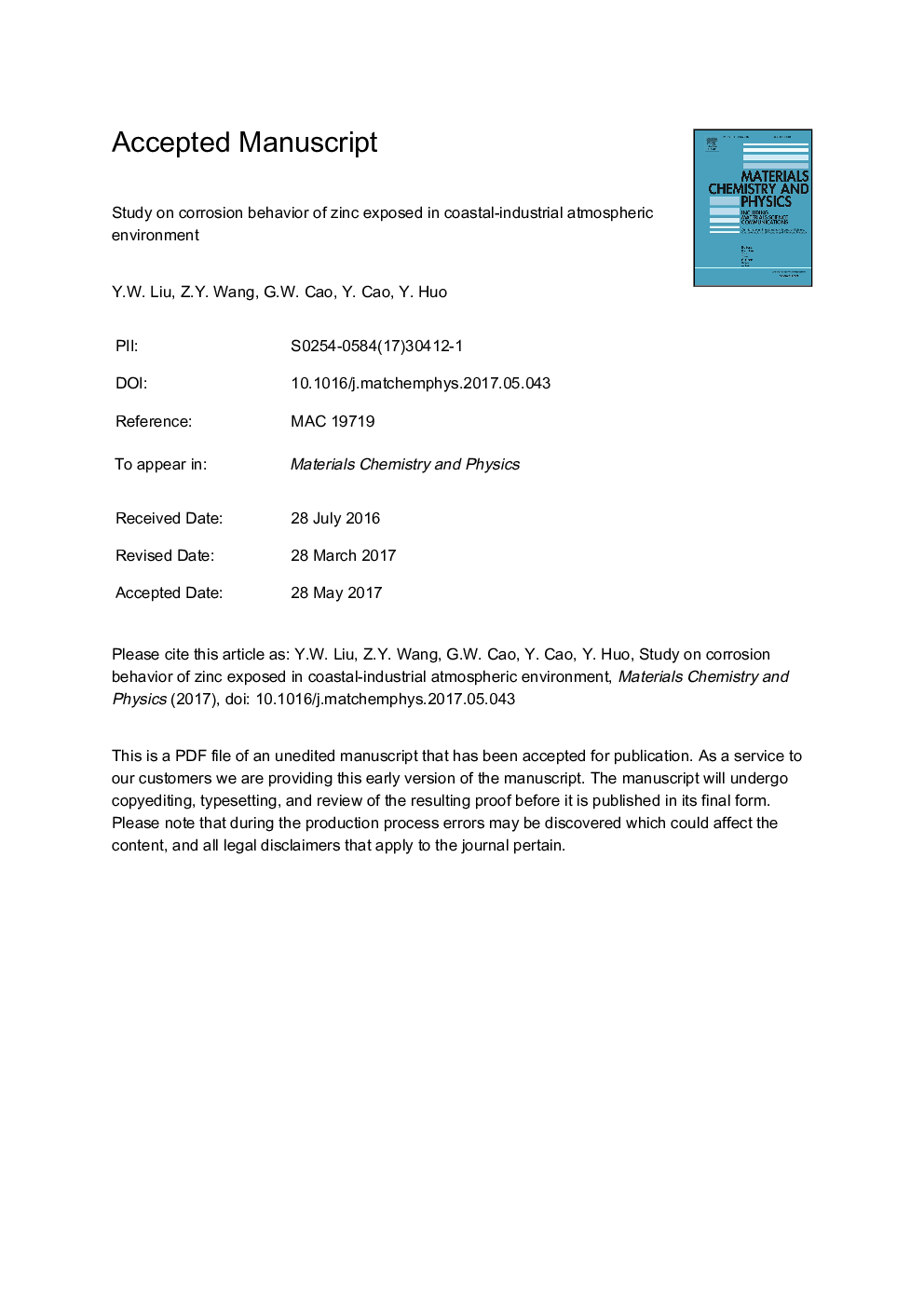| Article ID | Journal | Published Year | Pages | File Type |
|---|---|---|---|---|
| 5447828 | Materials Chemistry and Physics | 2017 | 24 Pages |
Abstract
The corrosion behavior of zinc subjected to Liaoning Hongyanhe nuclear power station (a typical coastal-industrial atmospheric environment) has been investigated by weight-loss measurement, scanning electron microscopy (SEM) observation, x-ray diffraction (XRD), potentiodynamic polarization and electrochemical impedance spectroscopy (EIS). The experimental results reveal that the corrosion kinetics of the corrosion of zinc in coastal-industrial atmospheric environment followed empirical equation D = Atn, and with the increase of the exposure time polarization resistance (Rp) and charge transfer resistance (Rct) increased, the corrosion rate decreased gradually. XRD, SEM and EDS indicated that the depth and width of all pits increased with time and the surface corrosion gradually transformed into a uniform corrosion. The components of the rust layers were composed of Zn5(CO3)2 (OH)6, NaZn4SO4Cl(OH)6·6H2O and Zn12(OH)15Cl3(SO4)3·5H2O. In the initial exposure period, the corrosion products was Zn5(CO3)2(OH)6, while with prolonged exposure, a two-layer structured corrosion products formed, which were comprised of NaZn4(SO4)Cl(OH)6·6H2O and Zn12(OH)15Cl3(SO4)3·5H2O, all these products were flaky-structured and compact enough to provide excellent protection.
Keywords
Related Topics
Physical Sciences and Engineering
Materials Science
Electronic, Optical and Magnetic Materials
Authors
Y.W. Liu, Z.Y. Wang, G.W. Cao, Y. Cao, Y. Huo,
